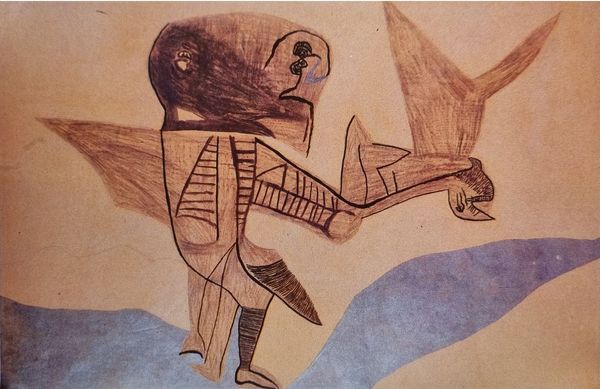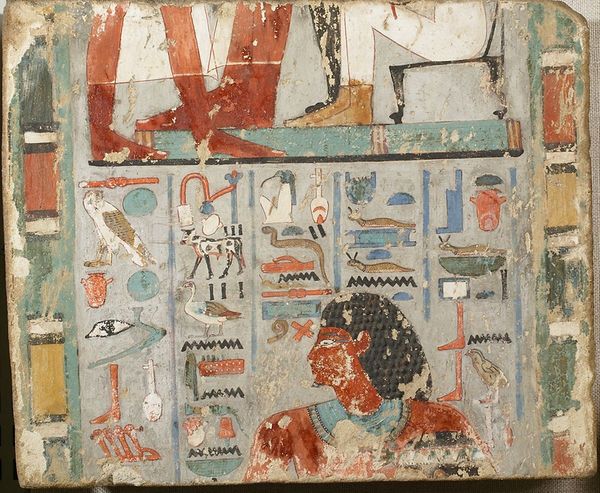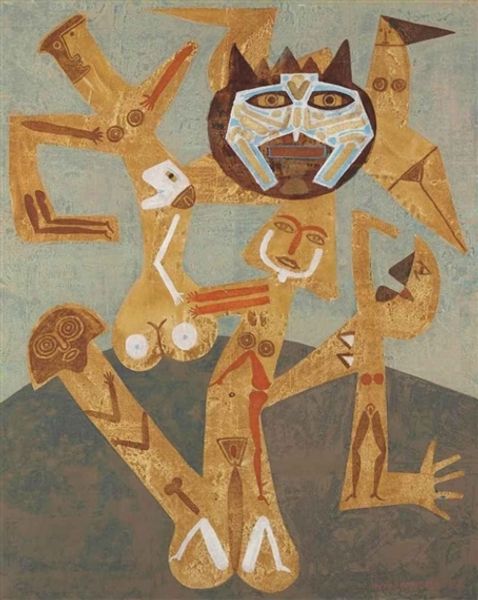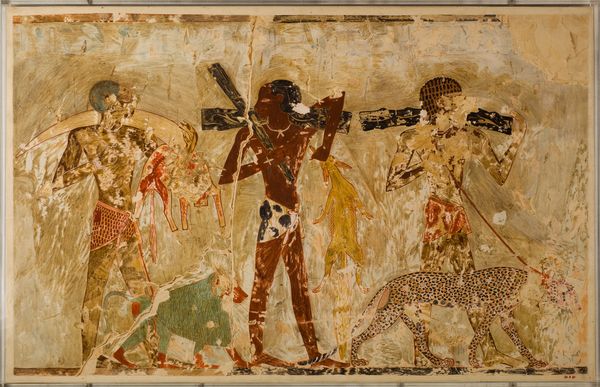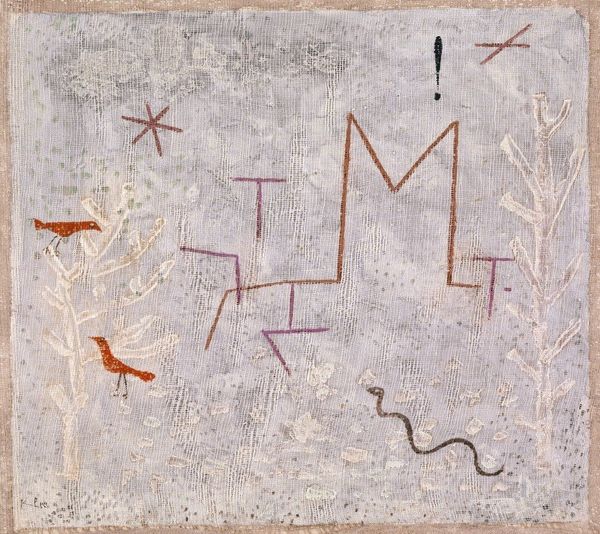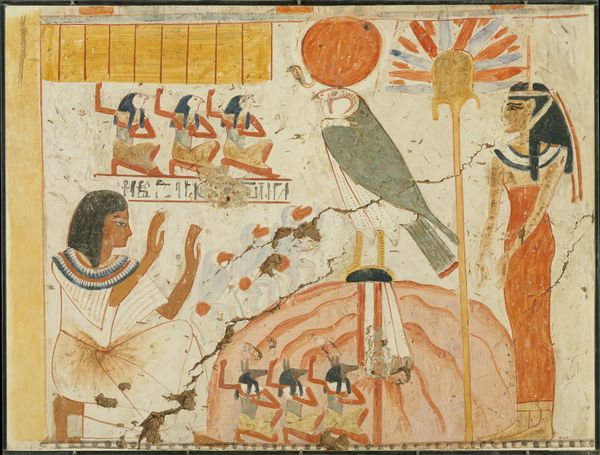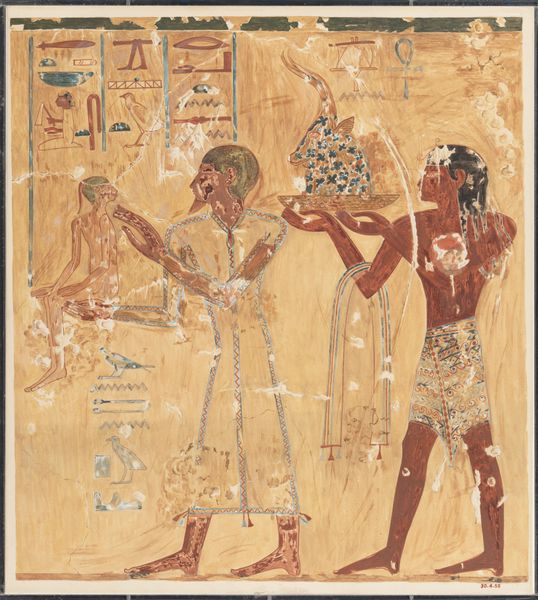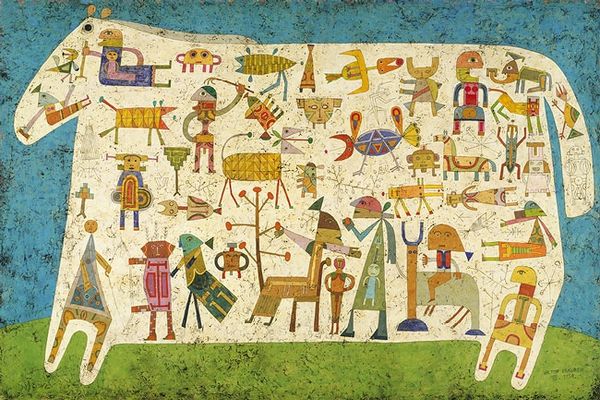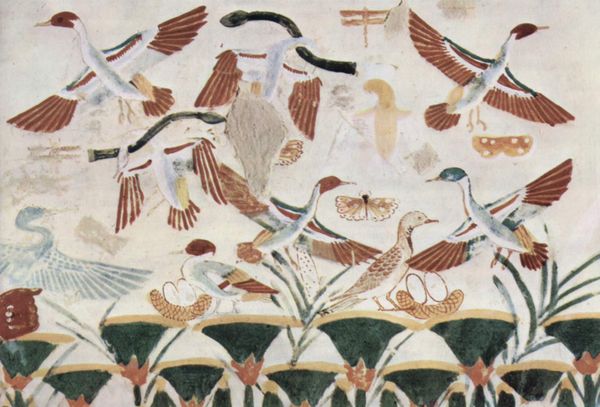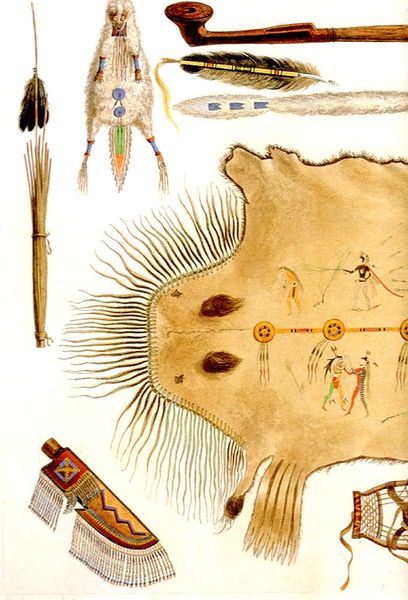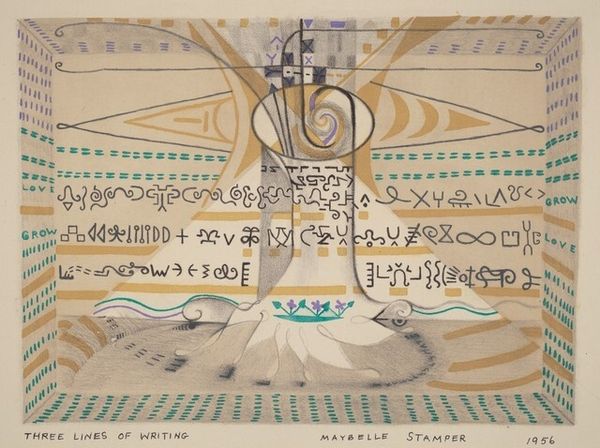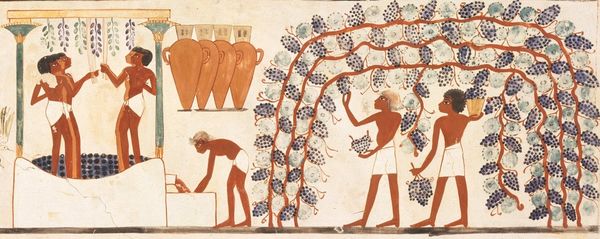
mixed-media, painting, watercolor
#
mixed-media
#
water colours
#
painting
#
landscape
#
rayonism
#
folk art
#
figuration
#
watercolor
#
folk-art
#
russian-avant-garde
#
mixed media
#
watercolor
Copyright: Public domain US
Curator: Mikhail Larionov's "Winter," created around 1912, employs mixed media to conjure a fascinating tableau. What are your initial thoughts? Editor: There's something unsettling yet captivating about this piece. The stark figure against the sepia tones evokes a primal sense of isolation, almost as if we are peering into some forgotten ritual. Curator: It's compelling how Larionov fuses different artistic languages here. Notice the almost deliberately crude, folk-art-like rendering of the houses, the animals. This challenges the established academic painting of the time, reflecting a move to valorize peasant artistry. Editor: Absolutely. I see the influence of Russian folk traditions but filtered through an avant-garde lens. This is no simple genre painting; there’s a disruption of established social hierarchies present in the visual language itself. It speaks to the broader social ferment of pre-revolutionary Russia. I wonder how audiences at the time responded to this representation of rural life, with its stylized form and symbolic content. Curator: Consider the labor involved, too. Though appearing simplistic, the execution using mixed media demands meticulousness. Look at the precise way the paint is applied, in flat blocks, emulating printed textile design maybe, but using painstaking techniques. We must also acknowledge Larionov’s interest in creating accessible and affordable art. Editor: And how that ties into constructions of Russian national identity at the time! There was a real tension between idealizing the peasantry as the "soul of Russia" while also othering them. This artwork, with its strange blend of modernism and archaism, seems to capture that conflict visually. Curator: Precisely. What might look merely quaint on the surface reveals itself to be entangled in the complex manufacturing of a cultural ideal, through careful artistry. It provokes one to consider the art market and Larionov’s place within this complex economic system. Editor: For me, the ghostly, looming figure at the center demands deeper questioning. Is this a representation of a gendered archetype? Does this figure point to the burdens that particularly impacted women in pre-revolutionary peasant communities? The image prompts questions that delve into identity, gender and politics of the time. Curator: That’s a compelling direction, indeed. There's a remarkable intensity to his style, reflecting a move against classical themes that deserves further investigation regarding craft and material production of this piece. Editor: It leaves me with a profound sense of disquiet and fascination. It underscores how even ostensibly simple works can speak volumes about social anxieties and cultural identity. Curator: A valuable lens through which we can explore how Larionov navigated the complex cultural landscape of his time and used these accessible mediums to comment on craft and its consumption.
Comments
No comments
Be the first to comment and join the conversation on the ultimate creative platform.
